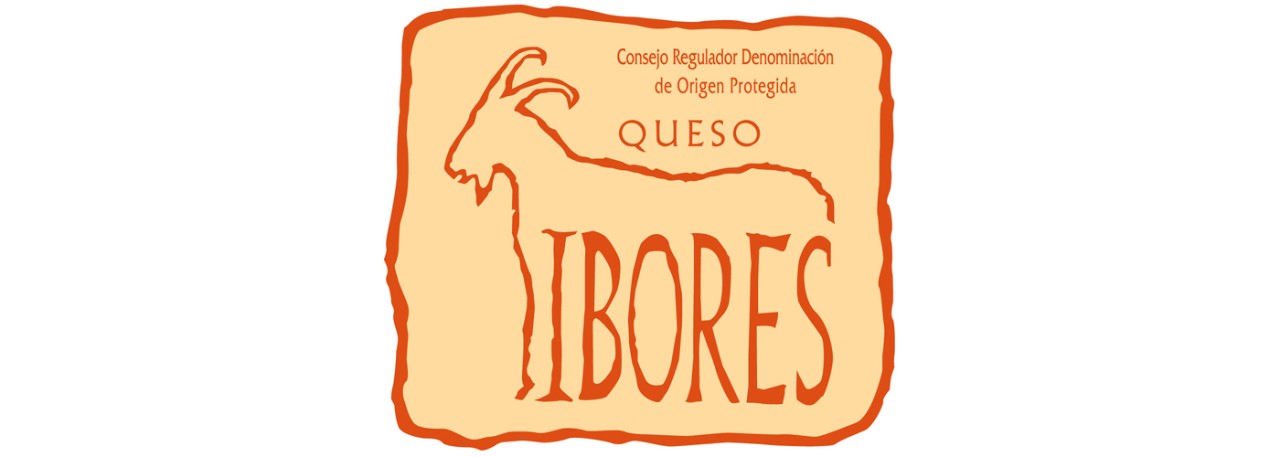.png.transform/rendition-xs/image_image%20(1).png)
Queso Ibores PGI
Cheese made from whole, raw milk from goats of the Serrana, Verata and Retinta breeds and their crossbreeds, and ripened for a minimum of 60 days.
Tasting notes
Characteristic, clean-tasting, slightly acid and moderately piquant flavor, with a slight finish of goat’s milk. Very pleasant and creamy on the palate. The aroma is slightly or moderately suggestive of raw goat’s milk. The texture is buttery and moist, somewhere between crumbly and elastic.
Other notes
Wheel-shaped, with smooth, flat top and bottom and smooth, flat-to-convex sides. Height 5-9 cm (2-3½” ), diameter 11-15 cm (4½-6”), and weight 650-1,200 g (1 lb 7 oz-2 lb 10 oz).Queso Ibores is currently marketed in formats including 1 kilo, halves, and quarters.
The rind is smooth and semi-hard and may be natural, washed or brushed, or coated with pimentón (a Spanish type of paprika) or olive oil. The natural color ranges from waxy yellow to dark ocher, with different coloring depending on the molds – from the greyish of the natural rind to orangey-red in pimentón-coated cheeses and yellow-ocher in oiled cheeses. The paste is ivory-white and semi-hard and may have a few, unevenly distributed eyes.
The physical and chemical characteristics are as follows:
- Fat in dry matter: minimum 50%
- Total protein in dry matter: minimum 30%
- Dry matter: minimum 50% Sodium chloride: 4% maximum
- pH: minimum 5.2
Production / Processing method
The goats may be reared either extensively or semi-extensively. In the latter, in order to protect flocks from the harsh summer climate, they are taken from the valley pastures to graze on the nearby mountain slopes. Milking begins in autumn and is stepped up in winter, reaching its peak in spring and ending in early summer because of the heat and the start of gestation.
In general, the PDO authorized breeds are well-adapted to the tough grazing conditions of the production area and provide sufficient milk. However, the Retinta and Verata breeds are under threat of extinction, and the predominant breed is the Serrana.
Goat-rearing has had to adapt to the traditional grazing lands. The milk used to make PDO Ibores cheese must be the whole natural product obtained from healthy goats belonging to the dairy farms covered by the PDO. It must be clean and contain no colostrum, medications, preservatives, etc. which might negatively affect the ripening, storage and health and hygiene of the cheese. Before use, the fresh milk must be kept at below 6ºC (43ºF) to prevent the development of microbes.
Cheese production begins with coagulation of the milk using natural rennet or other authorized starters, at 28-32ºC (82-89ºF) for 60-90 minutes. The resulting curds are cut until they form grains 10-20 mm (½–¾”) long. They are then transferred to cylindrical molds and pressed for three to eight hours at pressures of 1-2 kg/cm2 (28.5 lb/sq in.
The cheeses are then salted with sodium chloride alone, either dry or in a brine solution at a maximum concentration of 20º Beaumé, for a maximum period of 24 hours.
Finally, the cheese is ripened for 60 days at a relative humidity of above 75% and a temperature of 4-15ºC (39-59ºF).These cheeses are usually made from raw milk but pasteurized milk is allowed providing the starters authorized by the Regulatory Council are used, ensuring that the cheese will have the necessary Ibores characteristics.
The PDO cheeses are identified with a numbered label issued and controlled by the Regulatory Council. In addition, the producer’s own label must clearly state the name of the PDO, the date of production and whether the cheese has been made from raw or pasteurized milk.
Geography / Relief and climate
The cheese-making district is located to the south-east of the province of Cáceres, in Extremadura, bordering with the provinces of Toledo (Castile-La Mancha) and Badajoz (Extremadura).
The landscape is mainly Mediterranean-type, with holm and cork oaks on the plains, alders, black poplars and willows along the rivers, and mountain vegetation with cistus. Amongst the area’s most important species are the chestnut, olive and cistus alongside large extensions of holm oaks. Shadier areas grow an unusual evergreen tree, the Portugal laurel (Prunus lusitanica), which is related to the cherry and apple tree, and other wild species. Its dark green leaves help channel the water from mist to the ground in a phenomenon known as horizontal rain. These trees are the remains of the many ancient cloud forests that flourished in this area during the Tertiary period.
The topography is mostly high land, forming parallel ranges in a south-east to north-west direction and areas of peneplain with igneous rock surfaces.The Guadalupe, Villuercas and Altamira mountains give rise to the valleys of the Vieja, Ibor, Almonte, Ruecas, Guadalupe and Gadarranque rivers, all of them long and deep.
Pico Villuercas, the highest peak in the production area, reaches 1,600 m (5,249 ft).The soils are not very deep and are poor, mostly formed from quarzite, granite and slate. Cultivation is only possible in valleys and the plains surrounding them.
Rainfall is always above 600 liters/m2 per year in the lower areas, and reaches 1,000-1,200 l /m2 in the mountains. This allows for acceptable development of natural pastures, with both evergreen and annual species. Average temperatures are 15-16ºC. Winters are cold and summers very hot.
Regulatory Council
Consejo Regulador de la DOP Queso Ibores
Apartado de Correos 67
10200 Trujillo (Cáceres)
Extremadura
Tel: (+34) 927 323 076
quesoibores@quesoibores.org
www.quesoibores.org
Sources:
- Spanish Ministry of Agriculture
The natural color ranges from waxy yellow to dark ocher, with different coloring depending on the molds – from the greyish of the natural rind to orangey-red in pimentón-coated cheeses and yellow-ocher in oiled cheeses.


- Ibores 1
- Ibores 2

Trujillo (Extremadura)
